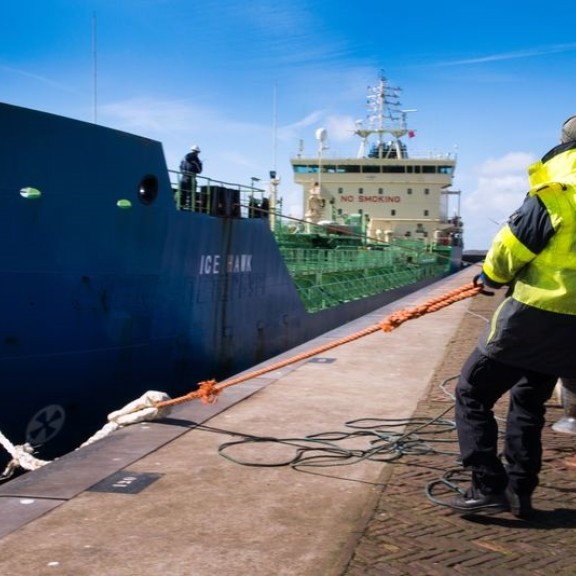
Transhipment in North Sea Canal ports down by more than 10 percent due to coronavirus crisis
Transhipment in the seaports in the North Sea Canal region - Amsterdam, IJmuiden, Beverwijk and Zaanstad - fell by 10.7% to 48.7 million tonnes (2019: 54.6 million) in the first six months of this year. The impact of the global corona virus crisis on the transhipment figures is clear.
Transhipment also fell in the port of Amsterdam during the first six months of 2020. The volume declined from 45.2 million tonnes in the first half of 2019 to 39.8 million tonnes this year (-12%). This drop was also clearly a result of the coronavirus pandemic.
Vital infrastructure
Koen Overtoom, CEO of Port of Amsterdam, says: "For the first time in years we have seen a reduction in the transhipment in our port. And it is a significant one. However, we are not pessimistic."
"In the first half of the year, we have shown in difficult conditions how crucial the port is for the region and for the country. As vital infrastructure, we have continued to manage shipping traffic and to handle cargo flows, without letup. We have thereby contributed to keeping the country and the economy running."
"Our distribution clients in particular have had a strong six months, with the distribution of foodstuffs and packages. The market for transport fuels (petrol, kerosene etc.) is now recovering."
"It is hard to say what the second half of the year will look like. The fuels market is too fickle for that, and the impact of the coronavirus is uncertain. We do anticipate that in the current conditions the shortfall in volume for the year as a whole, will remain limited to the level that we have seen in the first six months," says Overtoom.
Increases and decreases
The decline in Amsterdam in the first six months was attributable to both liquid and dry bulk and containers. The transhipment of liquid bulk (mainly transport fuels) fell by 5.1% to 24.7 million tonnes, compared to 26 million tonnes over the same period last year.
Despite decreased aviation and road traffic, the volumes of transport fuels remained relatively constant. This is due to the fluctuating market for these cargo flows, which results in constant movement.
The volume of dry bulk fell by 21.2%. This was in particular due to a substantial decline in coal to 4.6 million tonnes, compared to 8.2 million tonnes last year (-43.6%). The unexpected, non-structural growth last year amplified the decline in coal volume this year. The transhipment of grains also fell (-15.4%), and there was a reduction in break bulk (-18.2%).
Sea and river cruise also ceased as a result of the corona virus pandemic. Port of Amsterdam decided, in consultation with the Amsterdam Amstelland Safety Region, to suspend cruise ships from the port from mid-March onwards, in order to minimise the risk of infection.
The port has been open to cruise ships again since mid-June, and the number of visits from river cruise ships is increasing slowly and cautiously. There were 21 visits in the first half of the year, of which 18 in January and February. The port of Amsterdam expects to welcome more river cruise ships in the second half of the year. On the other hand, at this moment the port does not anticipate sea cruise vessels returning in the second half of the year either.
Container transhipment fell by 31.6%.This cargo flow had grown steadily in recent years, partly as a result of the focus of the port of Amsterdam on short-sea lines. The decline can therefore also be attributed to the coronavirus, which resulted in scheduled services being partly suspended.
Varied picture across the region
Transshipment in IJmuiden fell slightly, by only 3.4% to 8.76 million tonnes. In Beverwijk the transshipment volume fell by 44.3% to 194,000 tonnes, and Zaanstad saw a 15.3% increase in transshipment to 84,000 tonnes.